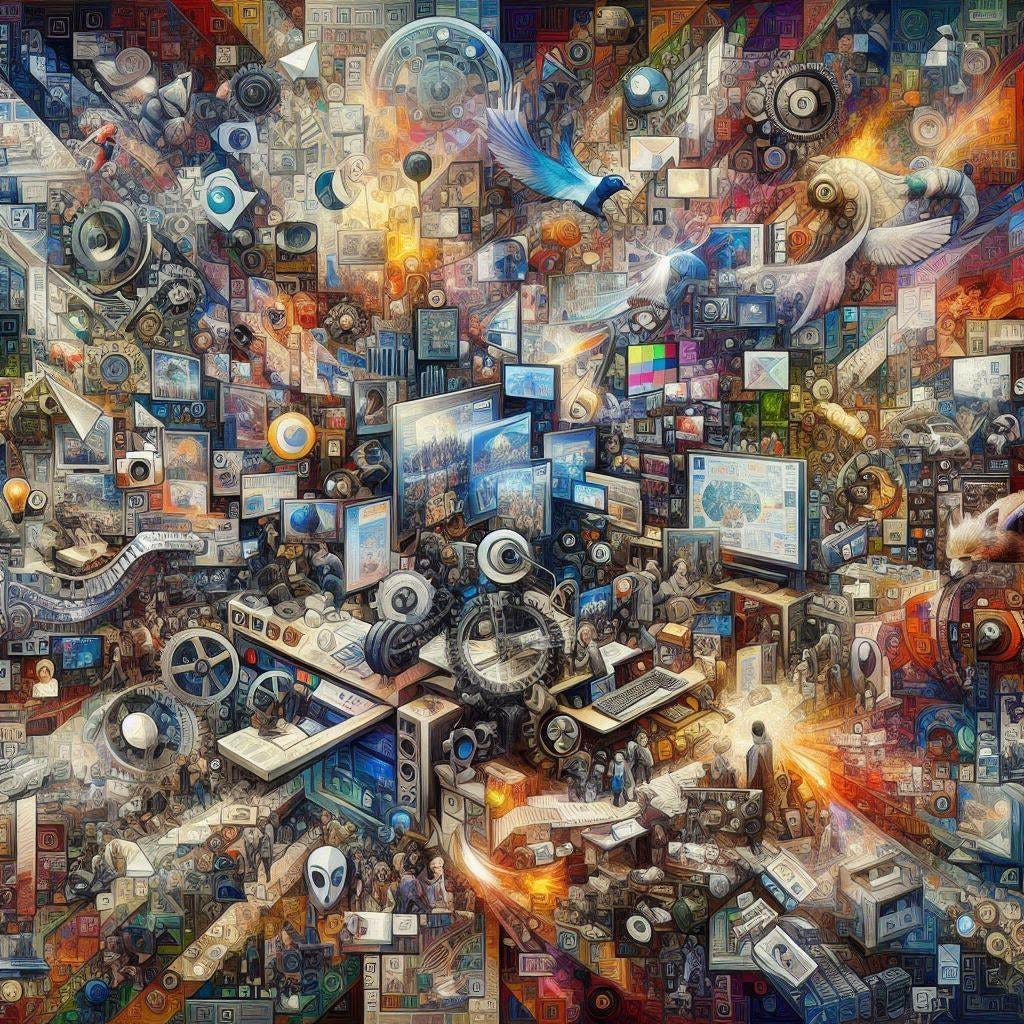## The Interplay of Media, Propaganda, and Reality: A Descriptive Summary
In the contemporary landscape of media and entertainment, a growing discourse has emerged around the synchronization of news events and entertainment narratives. This summary delves into the intricate relationship between these two realms, exploring the implications of concurrent programming and the pervasive influence of propaganda.
### Introduction
The notion that media and entertainment are intertwined is not new, but recent discussions have intensified around the idea that they serve as tools for propaganda. This summary examines the arguments presented regarding the synchronization of real-world events with entertainment narratives, suggesting that this phenomenon is not merely coincidental but rather a deliberate orchestration by powerful entities.
### The Argument for Synchronization
1. **Coincidences or Coordination?**
- Many theorists argue that the apparent coincidences between news events and entertainment are too frequent to be mere chance. For instance, the release of certain films or TV shows often aligns with significant real-world events, leading to questions about the motivations behind these alignments.
- **Example:** The release of *Stranger Things* coincided with the Uvalde school shooting, prompting Netflix to add a warning to the episode.
2. **Entertainment as Propaganda**
- The idea that entertainment serves as a form of propaganda is central to this discussion. By framing news and entertainment as two streams from the same source, it becomes evident that they are designed to shape public perception and behavior.
- **Notable Films and Shows:**
- *Waco: American Apocalypse* released alongside Trump's campaign launch in Waco.
- *House of the Dragon* featured themes of bodily autonomy that resonated with the abortion rights debate.
3. **Real-Time Alignments**
- The concept of real-time alignments suggests that media narratives are crafted to reflect and prepare audiences for unfolding events. This is distinct from predictive programming, which implies foresight rather than immediate synchronization.
- **Example:** The portrayal of police actions in media often mirrors real-life incidents, reinforcing narratives around systemic issues.
### The Role of Higher Powers
1. **Skepticism Towards Mystical Explanations**
- The prevailing skepticism towards explanations that invoke higher powers or simulations is evident. Critics argue that attributing these coincidences to divine intervention or a simulated reality detracts from the tangible manipulations at play.
- **Counterpoint:** The argument posits that if humans can orchestrate complex events, attributing them to a higher power undermines the agency of those involved.
2. **The Government's Hand in Media**
- The discussion emphasizes the role of government and powerful entities in shaping media narratives. The idea that these organizations have a vested interest in controlling public perception through entertainment is a recurring theme.
- **Example:** The portrayal of political figures and events in films often aligns with governmental agendas, suggesting a coordinated effort to influence public opinion.
### Conclusion
The intricate relationship between media, entertainment, and reality raises critical questions about the nature of truth and perception in contemporary society. As audiences become increasingly aware of the manipulative tactics employed by media, the challenge lies in discerning fact from fiction. The ongoing discourse around concurrent programming and propaganda highlights the need for a more nuanced understanding of how narratives are constructed and disseminated. Ultimately, recognizing the interplay between these elements is essential for fostering a more informed and critical public discourse.
---
This summary encapsulates the key themes and arguments presented in the discussion of media synchronization and propaganda, providing a comprehensive overview of the complex dynamics at play in contemporary society.











